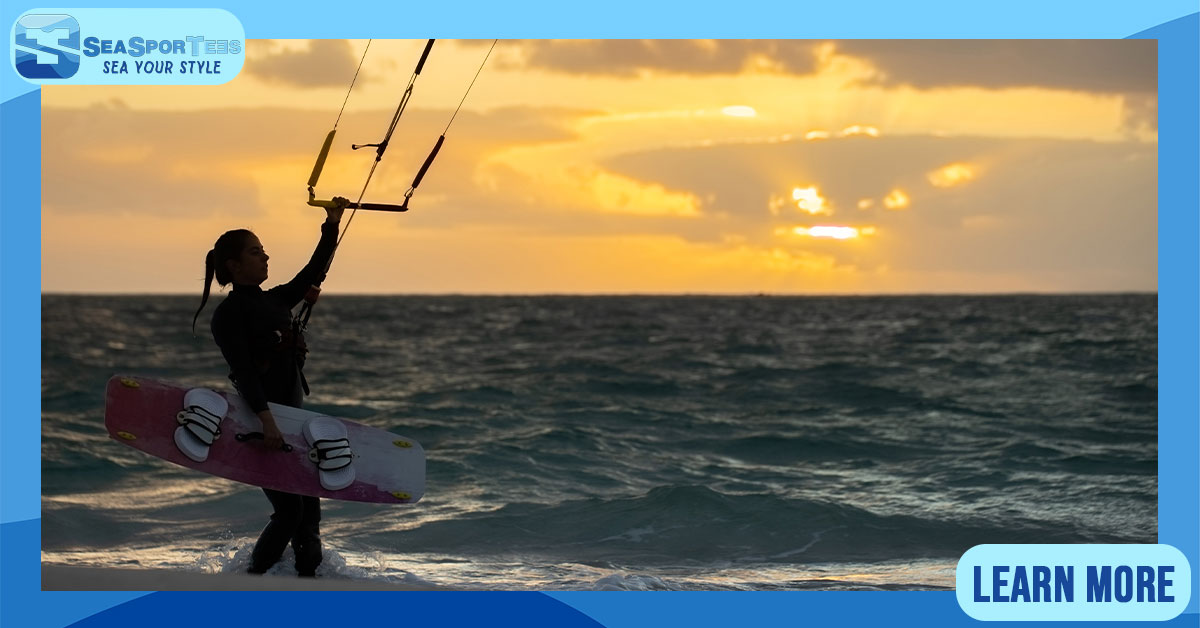Kite Surfing, Water Sports & Adventure
Mastering Kite Surfing: The Ultimate Guide to Perfecting Your Kite Angle
Mastering the Wind: Essential Kite Surfing Tips for Every Rider
Kite surfing, also known as kiteboarding, is one of the most thrilling water sports, blending the best of surfing, wakeboarding, and wind sports. The sport’s appeal lies in its ability to harness the power of the wind, allowing kite surfers to glide over the water, ride the waves, and even perform jumps and tricks. However, no matter how skilled a kiteboarder becomes, one of the most crucial elements of kite surfing remains mastering the art of kite control, specifically understanding kite angle.
In kite surfing, kite angle refers to the position of the kite relative to the wind direction. This aspect of kite control often gets overlooked by many beginners and even some intermediate riders. However, understanding how to properly adjust and maintain the right kite angle is essential for optimal performance on the water, regardless of your skill level. Let’s break down why this control is vital and how you can improve it to become a more proficient kite surfer.
Why Kite Angle Control is Essential for Kite Surfing
At its core, kite surfing is all about controlling the kite’s position in the air to capture wind power. The angle at which you fly your kite directly affects the forces acting on your body, the speed you generate, and the ease with which you can navigate the water. A small adjustment in the kite’s angle can result in significant changes in performance, from altering the amount of power you receive to the overall stability of your ride.
Here are some key reasons why kite angle control is so crucial for kite surfers:
1. Optimal Power Generation
When you’re kite surfing, the kite essentially acts as a sail, capturing the wind and translating that energy into movement. The angle of your kite in relation to the wind will determine how much power it generates.
- Too flat of an angle: When your kite is positioned too flat (near the edge of the wind window), it captures less wind power and won’t give you as much speed or lift.
- Too steep of an angle: If the kite is too high in the wind window (closer to the zenith), it can generate excessive power, causing your kite to pull too hard, which can be overwhelming, especially for beginners.
The right kite angle ensures you’re getting the right amount of pull, allowing you to glide across the water smoothly without being overpowered or underpowered.
2. Better Control
Kite angle control affects your ability to maintain stability. Without proper kite positioning, it can become difficult to maintain control, and you may feel as if the kite is pulling you in different directions. A steady angle allows you to ride with more confidence and reduces the chances of being caught off guard by sudden gusts or shifts in wind direction.
3. Improved Maneuverability
For kite surfers who want to perform tricks, jumps, or turns, kite angle control is essential. The angle determines how much power is in your kite and can dictate how much lift you get when attempting jumps or aerial maneuvers. You need to manage your kite’s angle to launch yourself into the air and control your descent.
The Right Kite Angle for Different Wind Conditions
Understanding how to adjust your kite angle according to varying wind conditions is key to becoming a skilled kite surfer. Here’s how you can adapt your kite’s position for optimal performance in different scenarios:
Light Wind Conditions
In lighter wind, the key to maintaining speed and generating power lies in keeping your kite higher in the wind window. This will allow you to catch as much wind as possible to generate enough pull for forward motion.
- Ideal Kite Position: Higher in the wind window, but still within the safe range.
- Why It Works: A higher position will allow the kite to generate more lift, compensating for the lower wind speed.
Moderate Wind Conditions
In medium-strength winds, you’ll want to fly your kite at a moderate angle to the wind. A more neutral or slightly lower position can provide a steady pull without feeling too overpowering.
- Ideal Kite Position: Midway between the zenith and the edge of the wind window.
- Why It Works: This position balances power and control, giving you just enough pull to glide comfortably while avoiding the risk of being too overpowered.
Strong Wind Conditions
In stronger winds, controlling the kite is more critical to avoid getting overpowered. A flatter angle with your kite positioned towards the edge of the wind window is necessary for maintaining stability.
- Ideal Kite Position: Near the edge of the wind window, lower to the horizon.
- Why It Works: In strong wind, flying the kite further to the edge of the window helps you control the power, preventing the kite from pulling too aggressively and making the ride more manageable.
How to Control Your Kite Angle for Better Performance
Achieving the perfect kite angle for any given situation takes practice and fine-tuning. Here are some tips to help you refine your kite angle control skills:
1. Adjust Speed to Match Your Kite’s Position
Your speed on the board will affect how much power you need from the kite. If you’re moving quickly, you need to keep the kite lower to the edge of the window to avoid getting pulled too strongly. Slower speeds require the kite to fly higher to maintain power.
2. Use Your Body to Control the Kite
Your body positioning also plays a role in kite control. By adjusting your stance on the board and the tension in the lines, you can influence how the kite reacts. Keep your body weight balanced and centered over the board to prevent unnecessary pulling or stalling.
3. Monitor the Wind
Wind conditions can change throughout your session, so be prepared to adjust your kite angle as needed. Whether it’s a sudden gust or a lull in the wind, stay alert and adjust your kite’s angle to maintain a smooth ride.
4. Practice Regularly
There’s no substitute for experience when it comes to kite surfing. Practice different kite angles in various wind conditions, paying attention to how your kite behaves and how much power you’re receiving. The more you practice, the more instinctive your control over the kite will become.
Final Thoughts: Kite Angle Control is Key to Kite Surfing Mastery
Kite surfing is a sport that blends technical skill with an understanding of nature’s forces. Mastering your kite angle is one of the most critical skills to master as a kite surfer. By ensuring your kite is positioned correctly, you’ll improve your control, generate optimal power, and make your sessions much more enjoyable.
Remember, kite surfing is all about finding that sweet spot where you and your kite work in harmony with the wind. With the right kite angle, you’ll elevate your performance and enjoy a smoother, more controlled ride every time. So get out there, practice, and most importantly, have fun mastering the wind!




